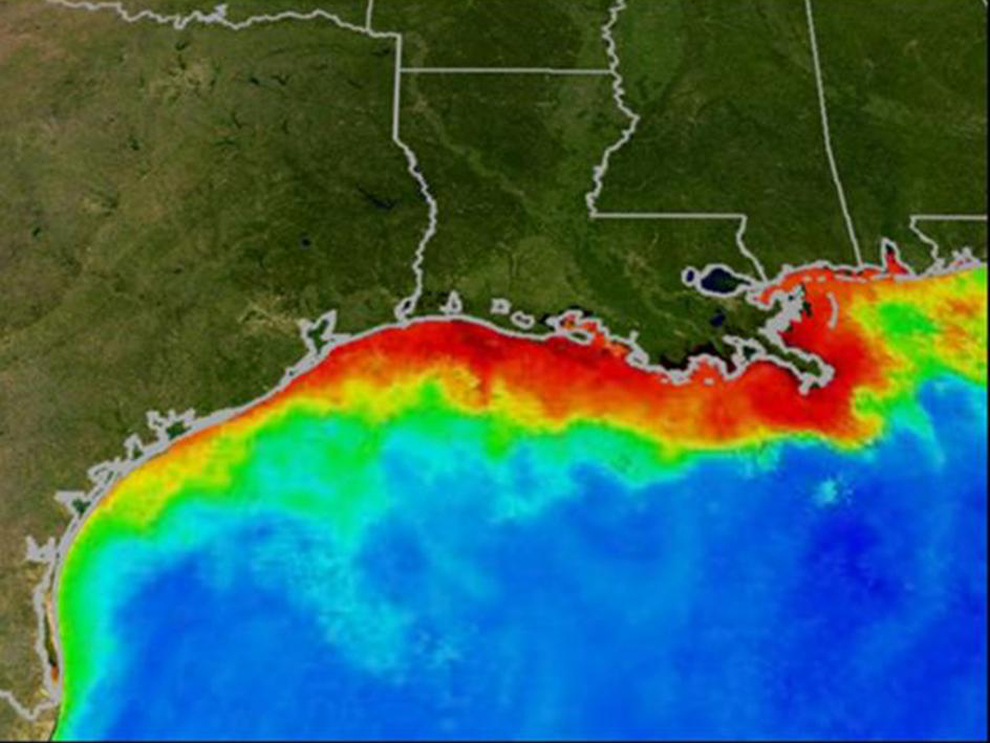The health of our oceans is under threat as human activities continue to release excessive nutrients into marine environments. These nutrients, primarily nitrogen compounds, fuel the growth of algae, leading to the depletion of oxygen in the water—a phenomenon known as dead zones. As our planet grapples with the consequences of climate change and pollution, understanding the drivers behind the intensification of dead zones is paramount. In a groundbreaking study led by Ph.D. student Zoë van Kemenade and her colleagues at the Royal Netherlands Institute for Sea Research, insights from ocean floor drill cores off the coast of California shed light on the complex interactions between nutrient influx, climate variability, and oxygen depletion in marine ecosystems. This article explores the findings of this research and the implications for ocean health and biodiversity.
The Growing Threat of Dead Zones: Dead zones, characterized by low oxygen levels, pose a significant threat to marine life and ecosystems. These oxygen-deprived areas, fueled by nutrient pollution from human activities such as agriculture, industry, and urbanization, disrupt the delicate balance of marine ecosystems. As excess nutrients enter the ocean, they stimulate algal blooms, which eventually decay and consume oxygen as they are decomposed by bacteria. The resulting oxygen depletion suffocates marine organisms, leading to mass die-offs and ecosystem collapse. With the warming of the oceans exacerbating these processes, the prevalence and intensity of dead zones are on the rise, posing a grave concern for ocean health and biodiversity.
Insights from Ocean Floor Drill Cores: Van Kemenade and her team conducted a meticulous analysis of drill cores retrieved from the Pacific Ocean floor off the coast of California, spanning a geological timeframe of 2.5 million years. By examining the distribution of specific molecules, known as ladderanes, produced by anaerobic bacteria under oxygen-free conditions, the researchers gained valuable insights into historical oxygen levels and nutrient dynamics in the ocean.
Unexpected Findings and Key Insights: Contrary to expectations, the researchers found that oxygen depletion in the studied region was not solely driven by fluctuations in temperature associated with ice ages and interglacial periods. Instead, the presence of ladderanes indicated a significant correlation between oxygen depletion and nutrient levels in the water. The influx of nitrogen compounds, resulting from human activities and natural processes, played a pivotal role in exacerbating dead zones, highlighting the complex interplay between climate variability and anthropogenic impacts on marine ecosystems.
Implications for Ocean Health and Biodiversity: The findings underscore the urgent need to address nutrient pollution and mitigate the impacts of dead zones on ocean health and biodiversity. Excessive nutrient input poses a threat not only to marine organisms but also to global fisheries, coastal economies, and human well-being. The expansion of dead zones could lead to cascading ecological consequences, disrupting food webs, and compromising the resilience of marine ecosystems. Urgent action is required to curb nutrient pollution, promote sustainable land management practices, and protect vulnerable marine habitats.
Addressing the Challenge: Mitigating the intensification of dead zones requires a multifaceted approach, encompassing policy interventions, technological innovations, and public awareness campaigns. Efforts to reduce nutrient runoff from agricultural and industrial sources, improve wastewater treatment practices, and promote sustainable fisheries management are essential steps towards safeguarding ocean health. Collaboration between scientists, policymakers, and stakeholders is paramount to developing effective strategies for ocean conservation and achieving long-term sustainability.
Looking Ahead: As we confront the escalating threats posed by dead zones and nutrient pollution, proactive measures are needed to mitigate their impacts and restore the health of our oceans. Continued research, monitoring, and modeling efforts will enhance our understanding of the complex dynamics driving oxygen depletion in marine environments. By prioritizing ocean conservation and adopting holistic approaches to marine management, we can safeguard the biodiversity, resilience, and vitality of our oceans for future generations.
The study led by Zoë van Kemenade and her colleagues provides valuable insights into the drivers of oxygen depletion in marine ecosystems and underscores the urgent need for action to address nutrient pollution and mitigate the intensification of dead zones. By raising awareness of the threats posed by excessive nutrient influx and advocating for sustainable ocean management practices, we can work towards preserving the health and integrity of our oceans. With concerted efforts and collective action, we can chart a course towards a more sustainable future for our planet’s marine ecosystems.
